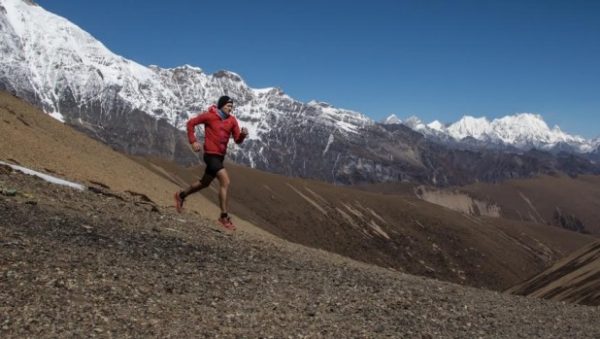Why runners are hitting the trails
Find out why runners are leaving behind the bitumen for the trail and how you can join them

I don’t know about you, but recently my social media feed has exploded with posts and photos of fellow runners hitting the trails. As a seasoned road runner and an occasional trail runner, seeing people jogging through alpine forest or along winding coastal trails with their buddies have made me want to join the revolution.
But before I drive an hour out of town and maybe get lost on a trail I’ve never run before, I wanted to find out if the growth in trail running was for real.
Trail ways
Chris Ord lives in Anglesea, on Victoria’s Surf Coast, and is surrounded by gorgeous trails. He’s also the publisher and editor of Trail Run Mag, Australia’s only magazine entirely devoted to the art of trail running.
“Trail running has boomed in the last three to five years. Before about 2010 it was a grass roots sport with a small community of dedicated fans running through the bush, mostly unheralded,” says Ord.
“Fast forward five years and today the big outdoor, adventure and running brands such as North Face, Salomon and Hoka are investing heavily in the sport.”
It’s taken off globally, too, with participation rates increasing annually. In the United States the number of people trail running increased from 4.5 million to more than 6 million between 2006 and 2012 and there are now hundreds of organised trail races each year.
Growing off-road
With no formal overarching body to define, shape, promote or administer the sport in Australia and no official research to cite, indicative research is our best guide to understanding what’s behind the growth in trail running in recent times.
“In the last two to three years, there has been a proliferation of events, social running groups, niche media, tours and training camps with a defined ‘off road’ running focus,” says Ord, who carried out some baseline research into the market in 2013 and continues to monitor the sector for clients.
He says a number of stars aligned at the right time to boost the attraction of trail running.
“The launch of the North Face 100 – now called Ultra Trail Australia – in 2007 combined with the much more accessible Salomon Trail Run Series, now sponsored by Hoka, really helped give the sport a push along,” says Ord.
“Other gateway events such as the off road and free parkrun and charity events including Oxfam Trailwalker and The Wilderness Society’s Wild Endurance 100km team challenge have increased awareness, too.”
Beginners luck
Another factor is the large shift in the running event market to encourage and accommodate beginner runners and those new to off road running. Traditionally, mainstay trail running events focused on ultra distances – greater than marathon distance – but in recent years races ranging from 5km to 21km, such as Ord’s own Afterglow twilight-night trail run, have dotted the running calendar.
So who’s making the move to trail running? Interestingly it’s women. Ord says event participation and social media statistics reveal that there’s a slight skew towards female trail runners.
Female skew
“Women in their mid-thirties through to their late fifties make up a large percentage of trail runners. Based on anecdotal evidence, I believe that women find the trail running community more friendly, inclusive and not as fiercely competitive as road running,” says Ord.
“The motivations for everyone out on trail, male or female, differ from road running and other competitive sports. There are many more layers to the reasons they run, from reconnection with nature, the seeking out of beautiful places and adventure, mental and health benefits, through to social connection and travel.”
And a growing body of research supports what so many trail running enthusiasts, Ord included, have experienced themselves: logging your kilometres in nature does wonders for mental health. Researchers from Stanford University have found that exercising for 90 minutes in a natural setting decreases neural activity in an area of the brain associated with mental illness.
Tips for new trail runners
Ord recommends the following tips to transition to trail running.
1. Don’t be afraid
Trail running isn’t that hard. People think trail running is going to be tough on the body but once they settle into it runners often notice they feel better after a trail run than they do running on pavement or asphalt. “This is because you use a range of muscles – not just the big running muscles like the quads – to walk, run, jump and pick your way along a trail,” says Ord.
2. Take is slowly
Ease in to trail running by starting with popular, shorter routes to build up your fitness. As with road running, form is key, and all trail runners should pay attention to their foot strike and cadence to help improve their running efficiency and increase pace.
3. Gear is good but it’s not essential
There’s plenty of high-tech gear such as GPS watches and hydro packs available for trail runners but Ord says you don’t really need any of it to get started. “A comfortable running shoe and appropriate clothing is all you need to hit the trails. Just put one foot in front of the other and enjoy the journey,” says Ord.
4. Fuel up
Water stations aren’t common in the bush, so remember to hydrate and fuel-up before going for a trail run. Plan your hydration and nutrition requirements and if necessary, take water and some food to have along the way.
5. Safety first
Like any run, always tell someone your plans and when you’re likely to be home. Take a mobile or run with a friend or group of people. Ord also recommends carrying a snake bandage, especially during the warmer months and understand how to use it just in case.
